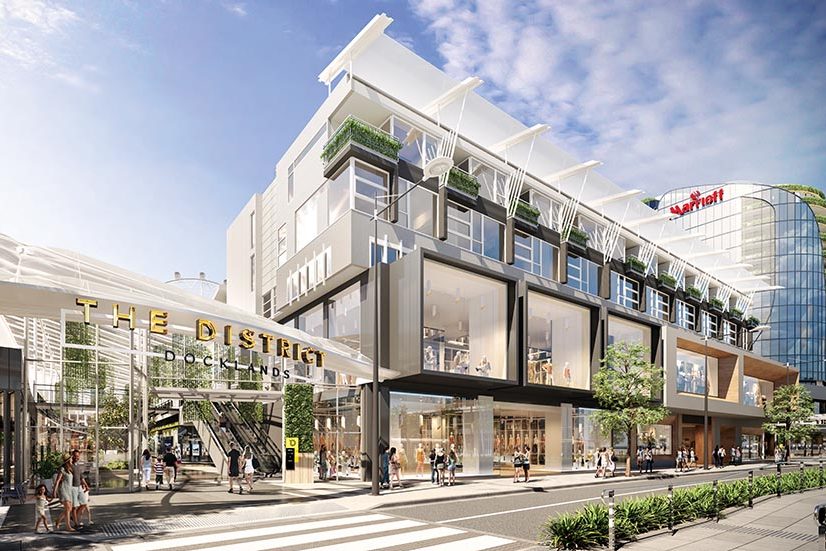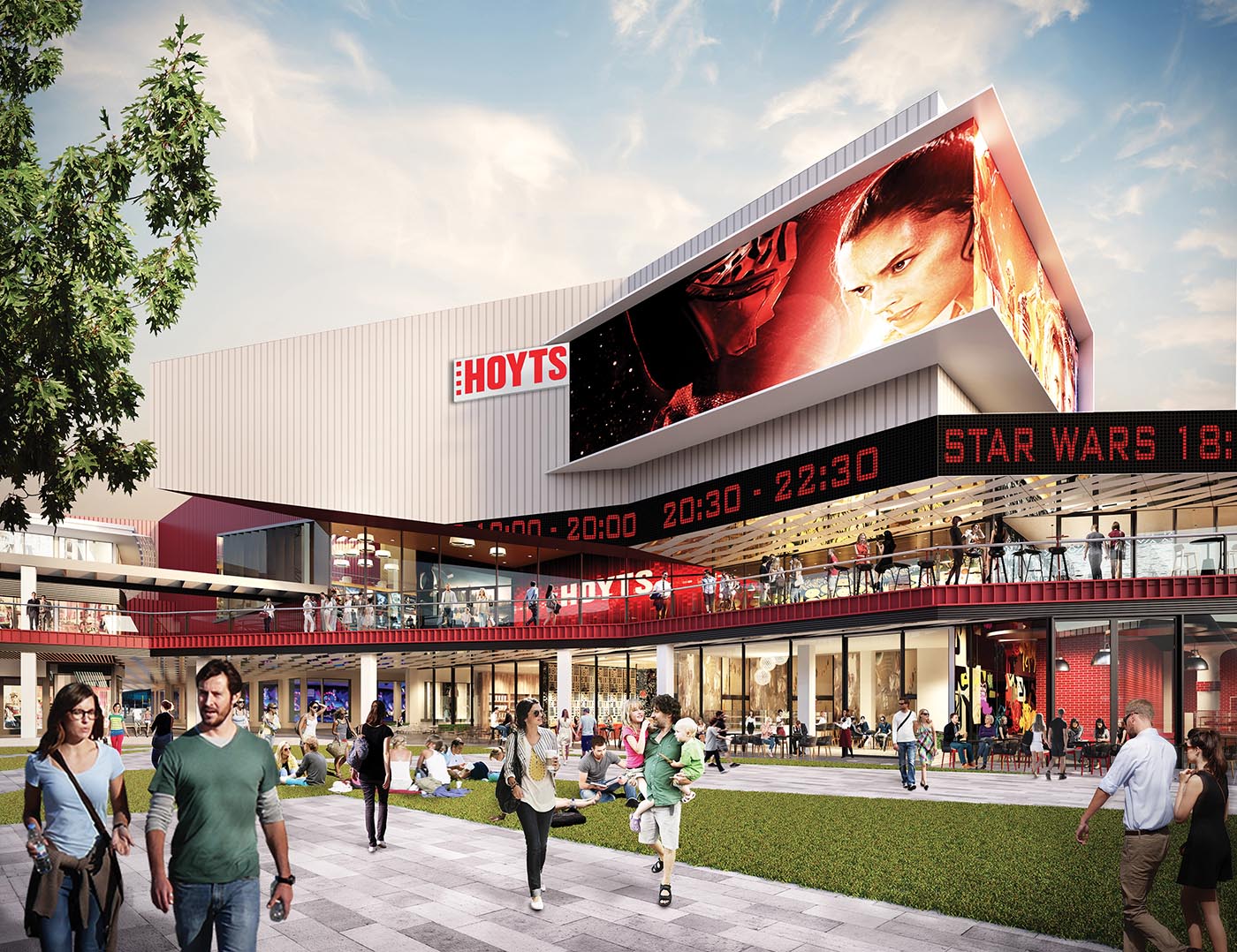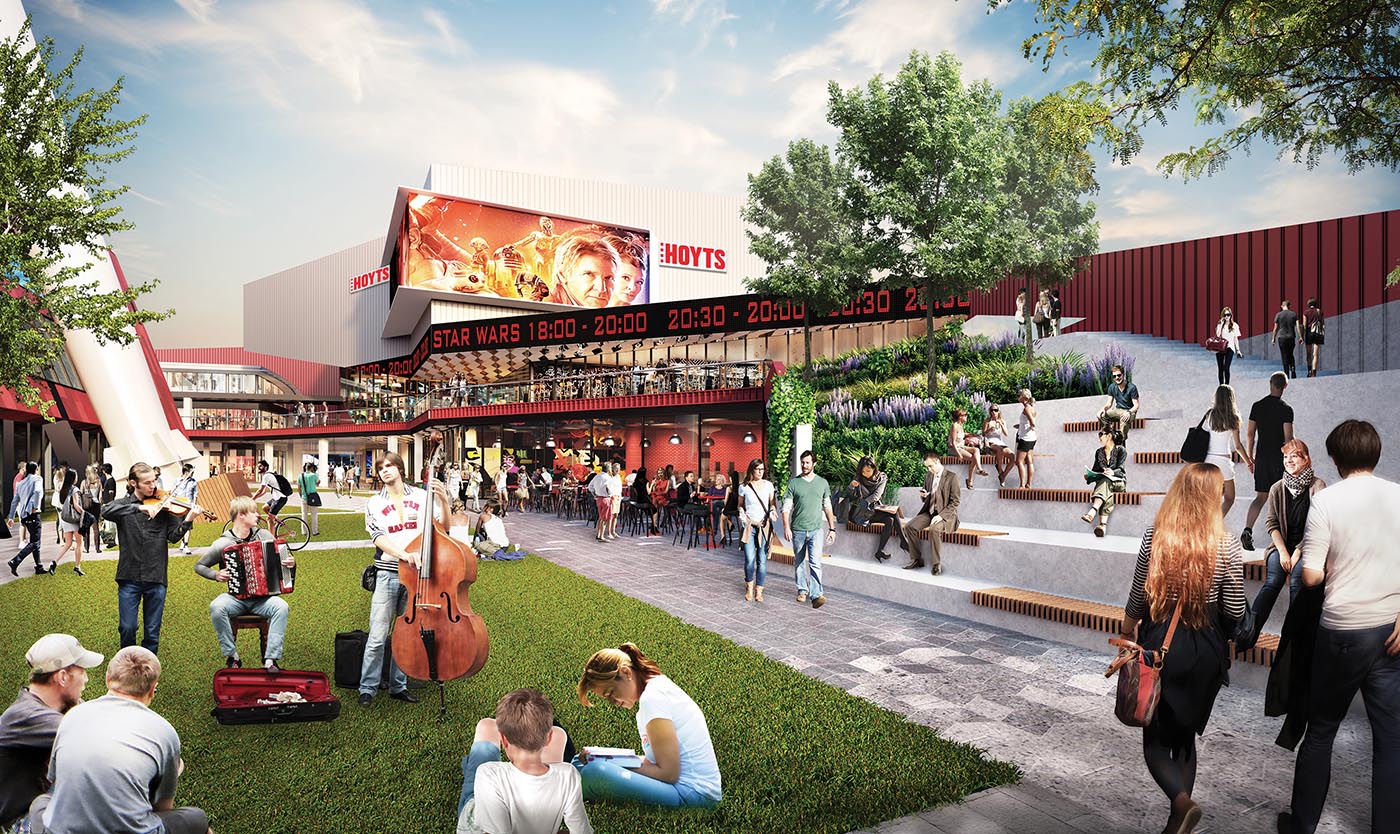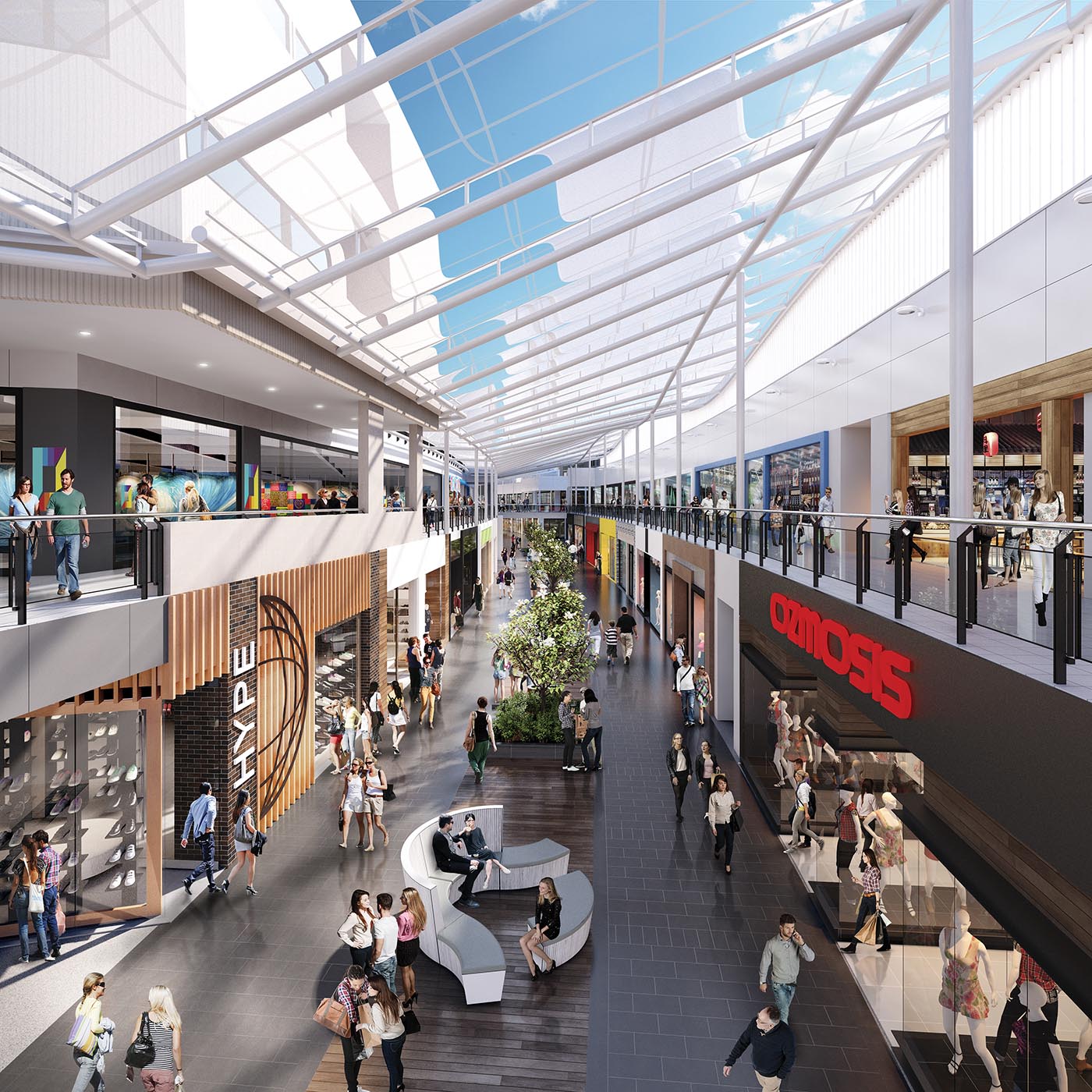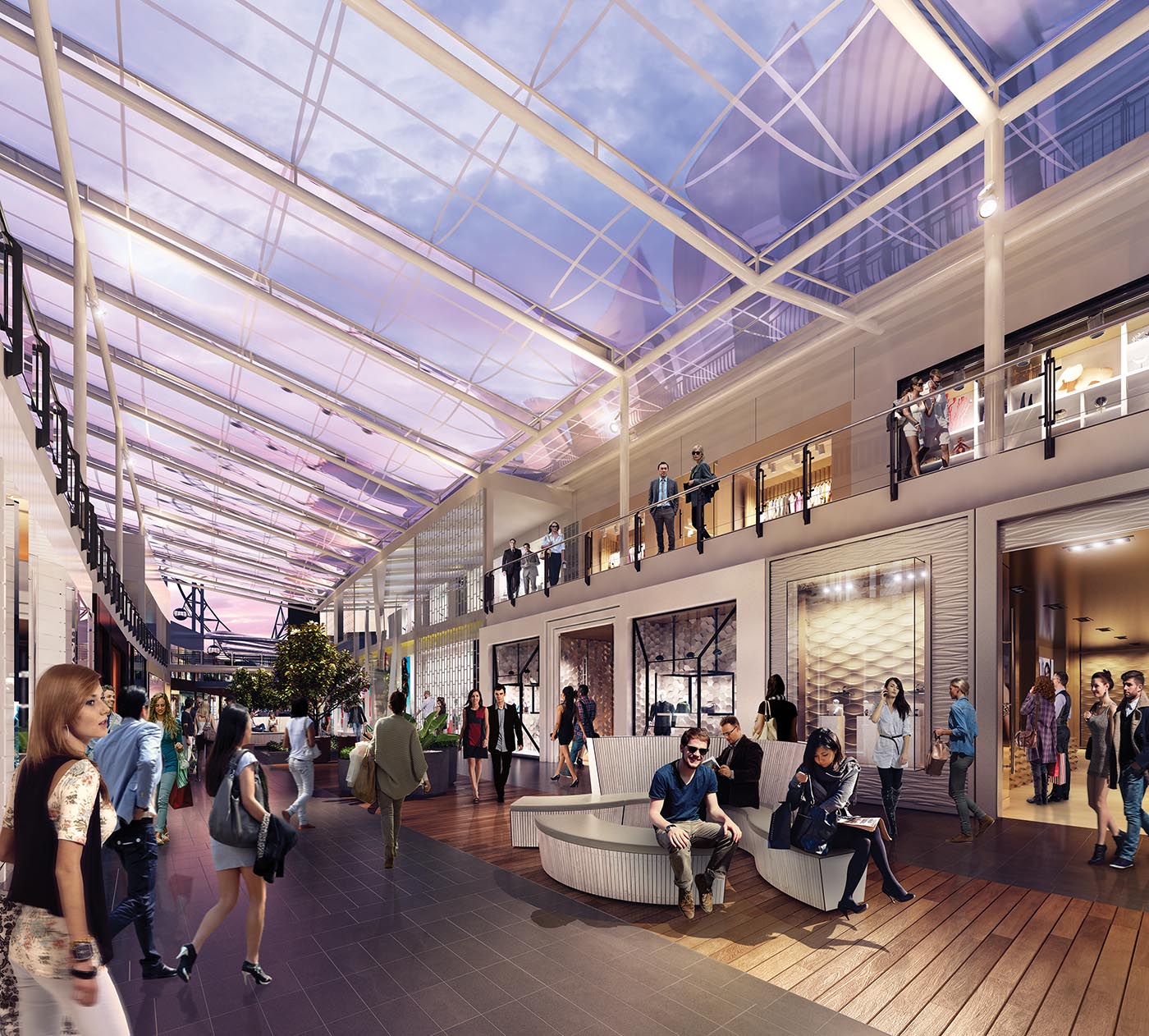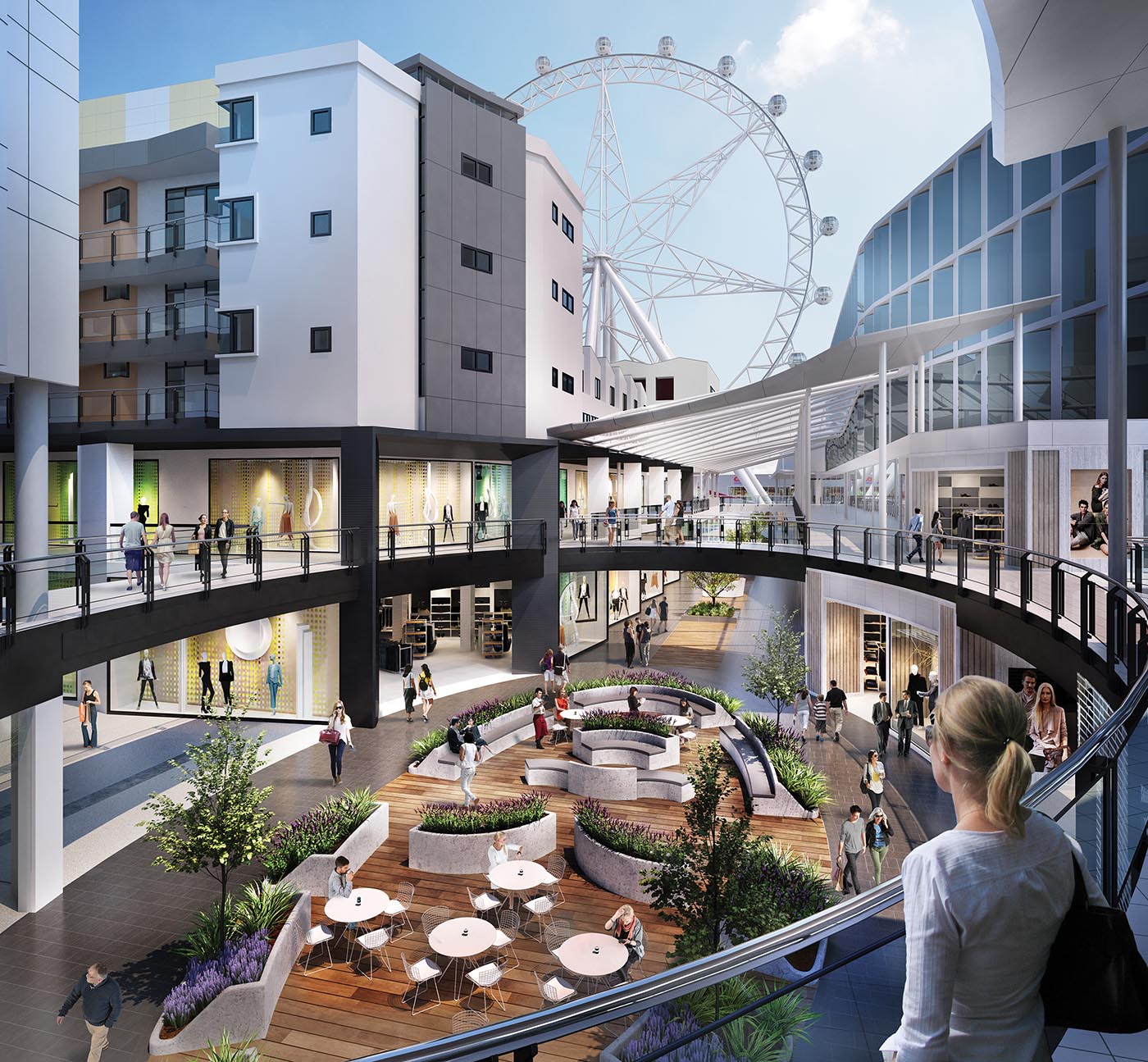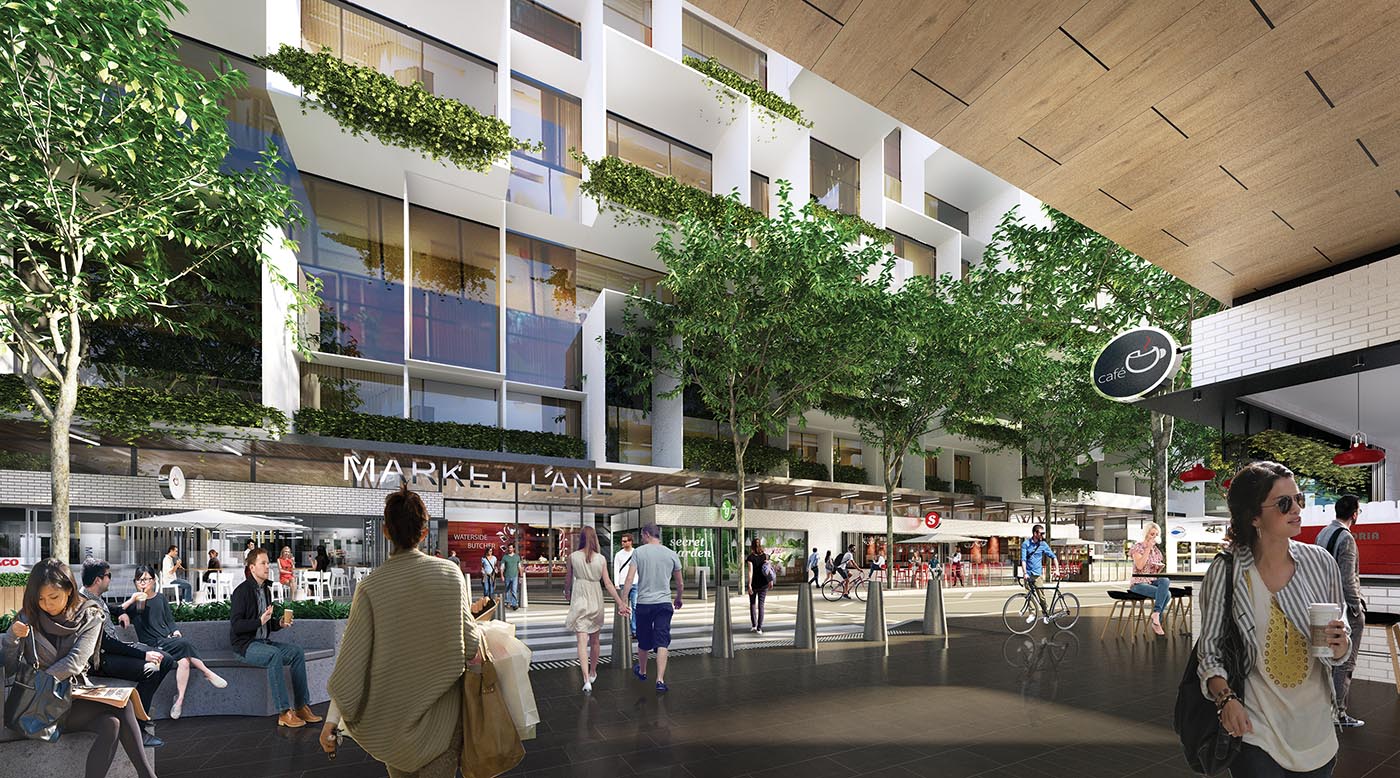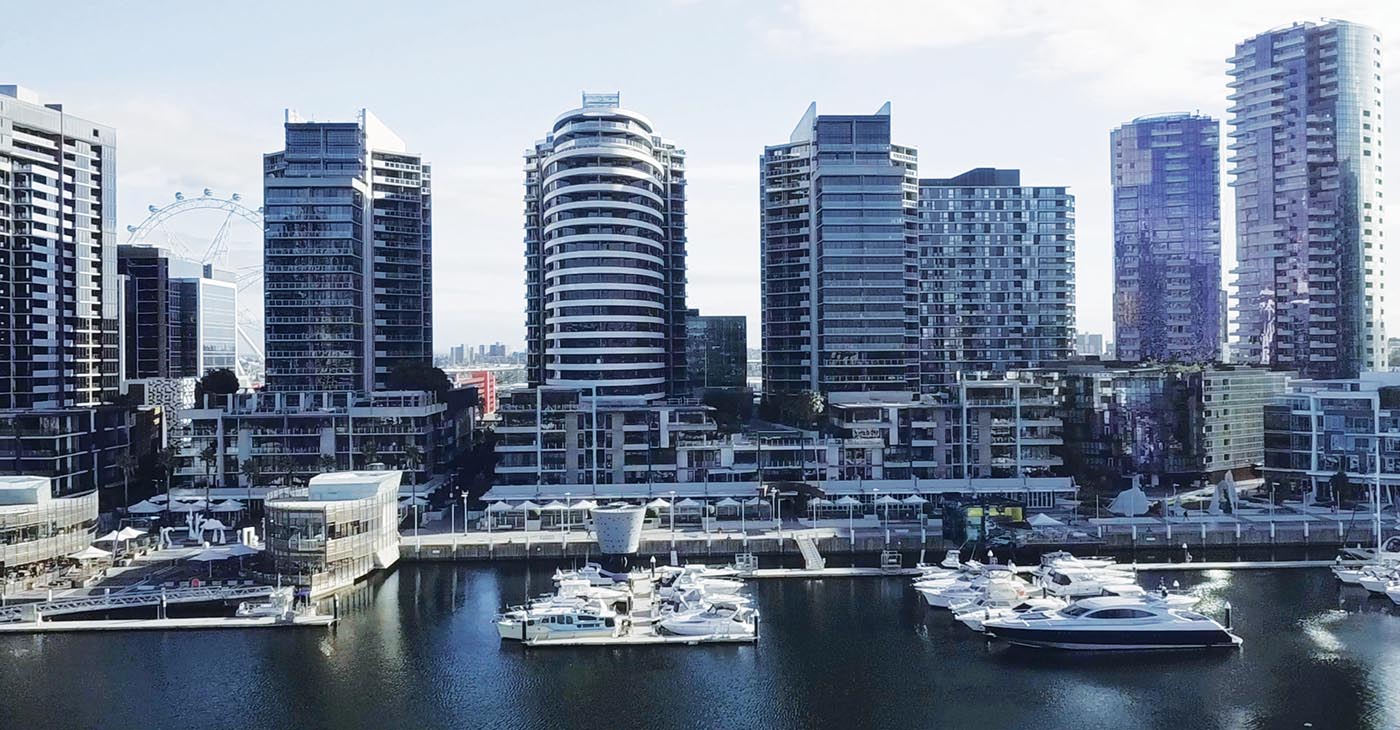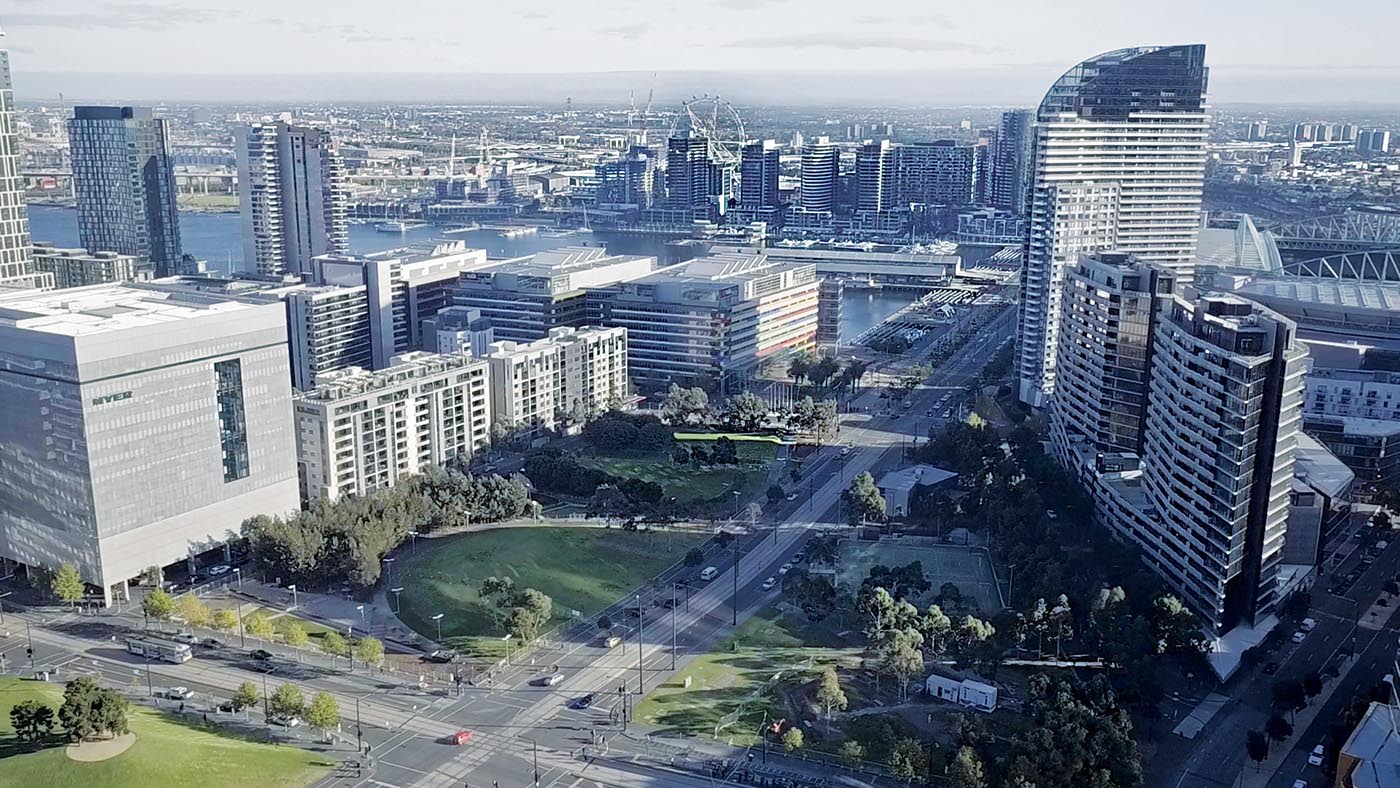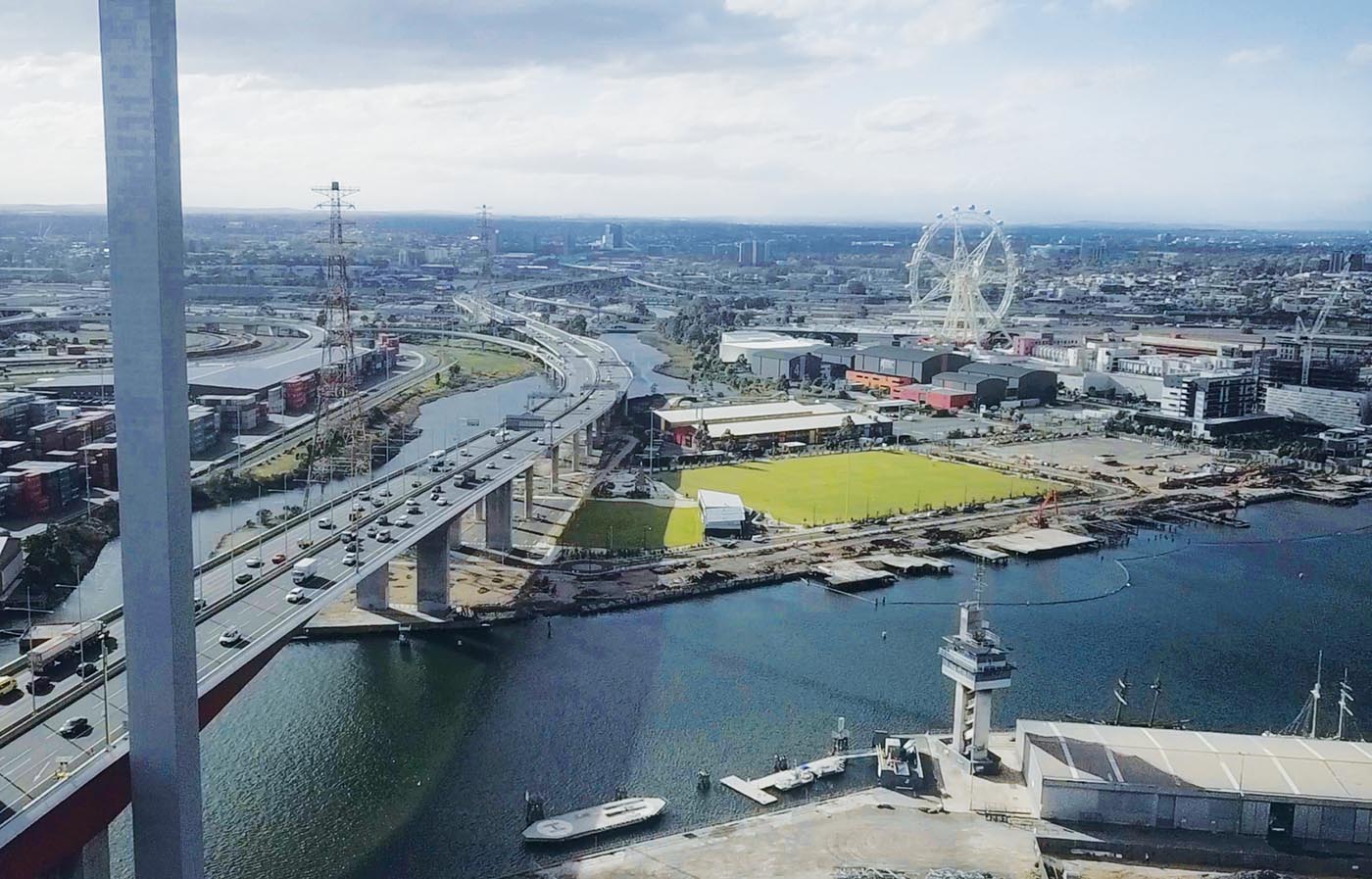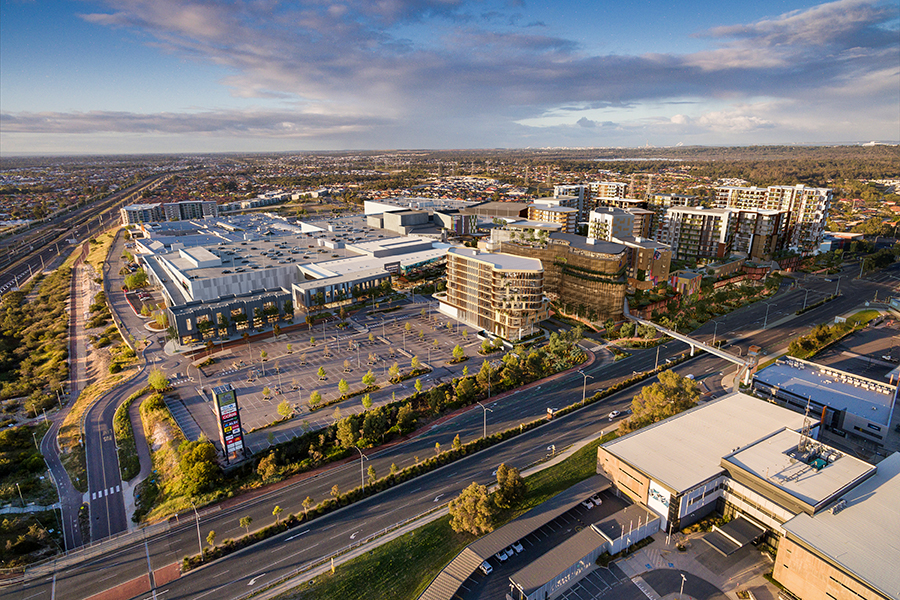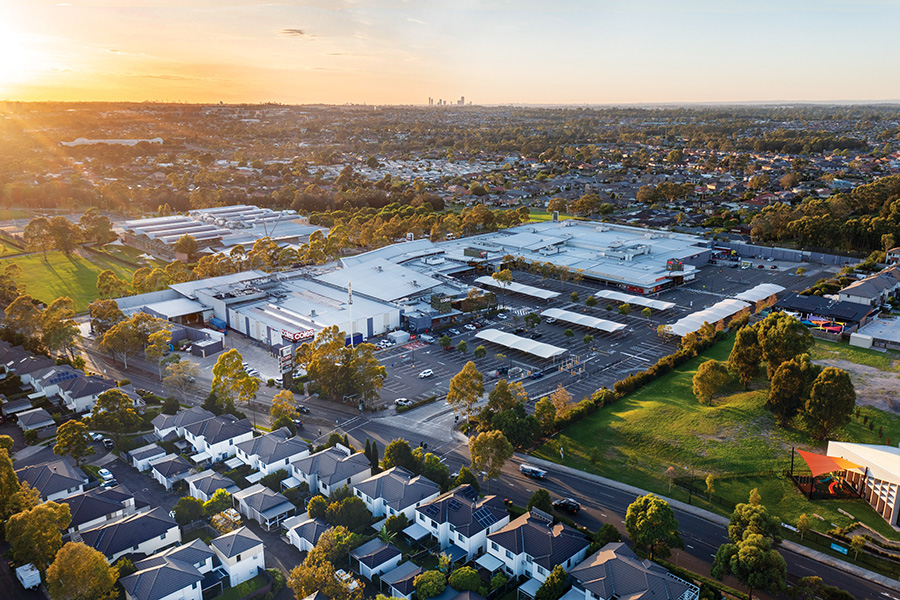Harbour Town and Waterfront City were the former names for the retail, entertainment and leisure component of Melbourne’s Docklands development. Docklands was one of the largest property developments ever undertaken in Australia; it began in the late 1990s and the retail component opened in 2005.
Docklands has now come into its own. ‘The District’ is the new name for the retail component but it’s far more than just a name change – it’s a whole new identity.
The original developers of Harbour Town, simply, just didn’t get it quite right. They were brave; Docklands was an idea, a concept in the making. The right ingredients were there – location to the Melbourne CBD, proposed anchor tenants committed – forming a grand and ambitious plan to convert a virtual wasteland into a seamless extension of downtown Melbourne.
Of course, hindsight is 20:20 vision and it’s not difficult to see now why Harbour Town didn’t achieve its full potential. The Melbourne Star Observation Wheel was a good idea; a guaranteed tourist attraction; the retail component was a natural – people shop where people congregate; the residential overlooking the open malls was bound to sell – the proximity to the Melbourne CBD made it somewhat of a lay-down misére! But the various components comprising the whole were fractured; disjointed; they didn’t congeal into a single homogenous mass.
The Melbourne Star Observation Wheel, as an item, worked. Yet at the beginning it was plagued with maintenance and operational problems. At its base, the attempt to create a family space with communal seating, along with a children’s play area, never quite made it. The retail, although boasting some fine tenants, didn’t really know what it was. Touristy? Local? For the residents? The CBD worker? It had bits of everything but lacked a common theme.
As time passed, it’s fair to say it languished. But all that is history; it’s the past. This story is about the future. It’s a story about ‘The District Docklands’: the new name for the old Harbour Town.
AsheMorgan, a real estate investment group, acquired Harbour Town in 2014 and began to define strategies to maximise its potential. It ran a design competition to develop a retail masterplan for the precinct, and chose retail architects NH Architecture because their concept aligned with AsheMorgan’s to create the streets of Melbourne in a protected, safe and beautifully landscaped environment.
Harbour Town’s fundamentals were outstanding; a significant part of Melbourne’s Docklands, the development was its public face – its retail, leisure and entertainment component.
Docklands is a redevelopment so close to Melbourne’s city centre that an extension of Collins Street runs right into its heart. It’s meaningless to describe The District Docklands and its future, without first understanding Docklands as a whole, what it is and how it relates to the Melbourne landscape.
The development of Docklands began in the late 1990s. VicUrban, the State Government controlling body, allocated some 200 hectares of regenerated land (almost the size of the Melbourne CBD itself) with seven kilometres of waterfront, for the development of a blend of residential, commercial, retail, leisure and entertainment. The major developers moved in – Multiplex, Leighton, Mirvac, Lendlease et al – and by the middle of the first decade in 2000, Docklands was firing.
The giant Aussie Rules stadium, Telstra Dome (now Etihad Stadium), was already hosting games, and National Australia Bank had moved into its new office complex bringing some 4,000 workers. The Seven Network had opened its state-of-the-art Broadcast Centre housing 20 television feeds to all five of the network’s capital cities, and the Industrial Supplies Office had moved there along with the new Bureau of Meteorology. Several of them boasted the address, ‘Collins Street, Melbourne Docklands’. But all that was around 2005 when Harbour Town first opened. Although well underway, Docklands was still in its infancy, and massive urban projects like this need time to mature. Move forward and almost a decade and a half later the scene is vastly different; the influx has increased and the pace is faster!
- The new building housing the entertainment & leisure component – HOYTS 8-screen cinema, bowling, rock-climbing and ice-skating rink.
Today at Docklands there are some 58,000 people employed in a number of national and multinational corporations. NAB are firmly entrenched and have been joined by ANZ, KPMG, Myer, Channel Nine, Facebook and Medibank Private. Currently, there are over $8.5 billion worth of projects under construction. Within one kilometre of The District Docklands, 6,400 apartments are either complete or under construction and this will experience a 400% increase over the next 10 years. Lendlease has a scheme to develop some 3,000 new apartments and, at New Quay MAB & Hiap Hoe, will develop apartments for a further 4,700 residents by 2025. There are plans to develop residential for a further 25,000 in the Docklands’ Arden Macaulay precinct.
Within minutes’ walk from The District Docklands are several major hotels with more to come. The Sebel Docklands is there, as is Four Points by Sheraton and Peppers Docklands. Presently under construction is Quest Docklands, Hotel Indigo and Park Royal Docklands. Marriott Docklands – having just received final planning approval – is expected to start construction in June 2018 and will have a direct entrance into one of The District Docklands’ malls. Docklands’ exposure from the outside is phenomenal; the freeway passing it is one of Australia’s busiest roads with some 220,000 vehicles a day; there are a further 40,000 passing every day on Footscray Road.
So, one of the major (if not ‘the’ major) differences between the Harbour Town of old and The District Docklands of today is that Docklands has now become an integral component of the Melbourne CBD; the latter’s centre of gravity has shifted. Docklands is now established, the population is there, the businesses are operating, the free Melbourne City Circle tram network has two connections plus the free city circle, with one arriving approximately every four minutes, there are multiple free tourist shuttle buses hourly and the immediate access to major arterials including Citylink and Footscray Road are all in place.
Whereas before, Harbour Town was part of the vision, the new The District Docklands will become the community focal point for the reality. Bill Giouroukos, a seasoned retail development executive who has occupied senior positions with Westfield in Australia, the US and UK, with Lendlease and with experience in Dubai and the Middle East, has been brought in by AsheMorgan to assist with the redevelopment of The District Docklands. He talks succinctly about the project and how it differs from the Harbour Town of old. “We’re not planning for what may be, instead we’re re-planning the project to cater for an existing and growing market,” he says.
“The old Harbour Town and Waterfront City was developed in tandem with the rest of Docklands. Docklands was a massive development site, of some 200 hectares and that was like rolling Sydney’s Darling Harbour, Cockle Bay Wharf, King Street Wharf, The Rocks and Pyrmont all into one. That was back in the time that the State Government announced the $700-million public/private partnership to totally redevelop the Spencer Street Railway Station Precinct, an area the size of three city blocks. All that’s now finished with links to Docklands via the Collins and Bourke Street alignments and a new footbridge link to the stadium.”
- The new redeveloped malls. Floors of bluestone and timber; new shop fronts and embellishments and now of course the malls are weatherproofed with the all-weather roofing system.
AsheMorgan’s founder and Principal, Michael Moss stresses the point: “There’s meaning in the new name,” he says. “Docklands is now established and The District Docklands will become its village, its community space, its heart and its public expression. We are looking to create a ‘place’ rather than a shopping centre. We want this to be an integral part of the landscape of Docklands where the environment is an oasis for families, residents, tourists and workers that is part of, but different from the hustle and bustle of the CBD. Docklands is real and is maturing into a powerful and important marketplace.”
And it’s a powerful market!
The 58,000 workers in Docklands (expected to double within 10 years), the residents, day trippers, international visitors, all have some exceptional demographic profiles. The profile of the primary customer segment indicates a high affluence level, with target customers being particularly high retail spenders. They comprise a 25% higher income bracket than that of the Melbourne metropolitan average. They have a 30% higher spend than the national average on fashion and a 14.6% higher total food expenditure.
AsheMorgan and their researchers have identified several market groups. There are the local workers who will use The District Docklands for their daily shopping – coffee and breakfast in the morning, a quick bite or a leisurely lunch in the middle of the day, an after-work drink with colleagues and maybe dinner once in a while. There are those who live in Docklands, over 10,000 at present, in the main double-income earners working in the Melbourne CBD with no kids or dependents. They will frequent cafes, restaurants, the supermarket; they will shop for their daily needs, take in a movie – it’s their village.
Students are represented as many live at Docklands. In the main they are international students who will ‘hang out’ in The District Docklands, frequent the cafes, the movies and other forms of leisure retail. They are fashion buyers, shoppers for their daily needs and wants. Over the next 10 years, the resident population will increase by some 400%.
The tourists are regional, interstate and international. The District Docklands is an almost full-day visit. They can ride on the Melbourne Star Observation Wheel, ice-skate, visit the Artvo immersive art museum, the Dialogue in the Dark experience, rock-climb, go bowling, shop, dine and wander through the village. And then of course there are the locals: families who live in the Melbourne suburbs. The District Docklands is connected both geographically and culturally, and primed to become Melbourne’s retail, business, lifestyle and experiential heart. When transformed, it is certain to become a ‘day-out’ venue for Melburnian families. It’s easily accessible via trams, public transport and Melbourne’s highways; in fact 2.62 million, or roughly half of the city’s population live, within 30 minutes.
So all of the above sets the scene for the transformation of Harbour Town into The District Docklands. What does that entail? What does the transformation consist of and what’s the development philosophy behind it?
Quite simply, this time around, The District Docklands knows what it is; there’s no debate about ‘future possibilities’, no estimates of market demand, no forecasts. Docklands is established; its future growth is assured. The District Docklands will position itself to provide for this market, with the whole of the transformation market driven.
With an existing and growing community of high-income earners at Docklands and the surrounding inner-west suburbs, there is a distinct lack of retail, leisure, entertainment and F&B offerings. At AsheMorgan, they’ve identified an incredible opportunity to reach an untapped market by transforming the precinct into a destination of choice at the door of the Melbourne CBD.
It’s a staged redevelopment, with the final stage completed less than two years after we go to press with this edition. The completion of the first and second stages, together with the change of name to ‘The District Docklands’, will be celebrated by the relaunch late 2017.
- The outdoor central court with smaller cross malls branching off giving the ambience of the Melbourne laneways.
- Entry to the new fresh food precinct anchored by Woolworths supermarket.
H&M will open a full-line 2,500m2 store, to then be joined by Miniso and Canterbury. The revitalised centre will feature a strong component of popular youth fashion outlets including General Pants Co, Hype DC, Platypus and a flagship store for SportsPower; they join and complement the strong base of existing retailers such as Cotton On Mega, Forever New, Bonds and Politix, to name but a few.
These retailers will now sit in a very different centre. Harbour Town was an exterior streetscape, fully open to the elements. The architecture was of the minimalist vein, somewhat basic, stark and modernistic. The transformation has already seen an all-weather roofing system installed; the ambience is now warmer. The new mall flooring, a bluestone, is combined with timber so it’s softer, gentler, more inviting than before. AsheMorgan is serious about landscaping and has employed a full-time horticulturist to create an oasis of greenery, vines, potted plants, and cascades from the upper level so the centre will assume an ambience closer to that of the Melbourne laneways just minutes away.
It’s this ‘villagey’ laneway feel that is fundamental to the success of the project, and the owners are acutely aware of its importance. Already they’ve installed potted planting in sections of the centre, yet the plants are not flowers but vegetables and herbs, and there’s a large site adjacent to the centre designated for a community garden. It’s as if The District Docklands, as a village, is the placenta of the whole of Docklands with a variety of umbilical cords spreading from it, reaching out to the various precincts and linking them to the centre.
And those precincts outside of The District Docklands are not just comprised of offices and hotels. There’s Etihad Stadium housing the headquarters of the AFL. Within seconds’ walk of The District Docklands, adjacent to it in fact, is the first outlet in the Southern Hemisphere of the retail giant Costco.
The redevelopment will also see a much more comprehensive centre than it previously was. The retail mix and the retail planning will change dramatically and the late 2017 re-launch will see the opening of the food and beverage precinct at the southern end.
A brand new HOYTS 8-screen cinema complex, already under construction, will open next year as will a new bowling complex, rock-climbing feature, softplay and gymnasium. These will operate alongside the existing attractions such as the Melbourne Star Observation Wheel and the ice skating rink. ArtVo and Dialogue in the Dark have already opened; both are firsts in Australia.
The Entertainment Precinct will be housed in a totally new structure at the northern end of The District Docklands. It curves its way around the face of the Melbourne Star Observation Wheel, all three attractions flanking the new food and beverage precinct.
- The new Quay
- The view of the harbour from The District Docklands
The main addition lies to the east of the present centre. It’s a Fresh Food Marketplace anchored by a full-line Woolworths supermarket, and will open in 2019. Preliminary leasing has already commenced on this precinct and it promises to bring the full range of Melbourne’s renowned food operators to The District Docklands within two years. It’s sorely needed; the Woolworths inclusion has obviously come from the recognition of an unsatisfied demand, with both office workers and a residential population demanding fresh food and groceries.
AsheMorgan is placing particular emphasis on this precinct. It’s not just for the locals, the office workers and residents, but the Fresh Food Marketplace will attract tourists and the day trippers as well. Melbourne, as we all know, has a reputation for food second to none and it will be featured in the Fresh Food Marketplace, where the line between fresh food for purchase and take-home will be blurred with that of having it cooked and consumed here.
A further stage of The District Docklands, commencing in 2019, is the Marriott Hotel by Capital Alliance which will be fully integrated into the centre with an entrance forming a major feature in the Fashion Precinct.
The District Docklands, in overview, consists of two, two-level major malls, running north-south. The Melbourne Star Observation Wheel, entertainment and leisure, and food and beverage precincts are at the north. The malls are now all weatherproofed; at the southern end, the aspirational fashion component will lead directly into the Marriott Hotel. The two major malls are linked by smaller cross malls and the new redevelopment gives the whole a somewhat ‘Melbourne laneway’ feel.
To the east of the main malls is another precinct – fresh food and supermarket – which will open in 2019.
The relaunch of the new centre and the inclusion of H&M, along with a host of other signature retailers, heralds the new direction for The District Docklands. The AsheMorgan team are fastidious in their research and in the definition of their market.
It’s a team that is professional, experienced and passionate. Stephen Beaumont, General Manager, has been in the business for over 20 years working with Mirvac, Colonial (Vicinity), AMP, Lendlease, and Pacific Properties. Kelly Jensen, Marketing Director has had over 10 years’ experience in hospitality, tourism and, before joining AsheMorgan, was Director of Marketing and Events at Destination Docklands. They’ve got it right and, as Bill Giouroukos says, “At The District we have a vision beyond the physical retail offer. Our plan is to embrace digital best practices from leading world markets to deliver a seamless physical and digital retail experience.”
The next two years will see The District Docklands take its place as a seamless extension to the Melbourne CBD. For Docklands itself, ‘extension’ is not the right word. Docklands is now part of the fabric of the City of Melbourne. As each day passes, Docklands firms its integration with the city. Before The District’s present redevelopment stages are complete (within two years) the line between Docklands and the Melbourne CBD won’t just be blurred as it now is, but it will disappear completely. Docklands and the CBD will be one.


